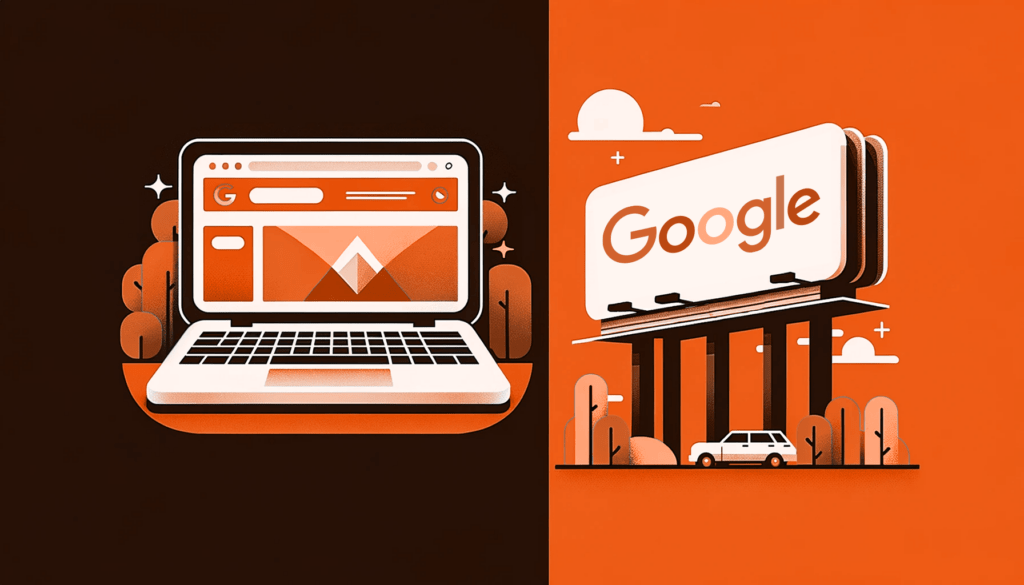In an era marked by relentless competition and shrinking marketing budgets, B2B IT providers face the critical challenge of not just standing out, but thriving. The importance therefore of IT marketing is more than ever, with success now demanding strategic, savvy marketing to carve out market share and drive growth. Whether it’s delivering cutting-edge IT solutions, managed services, or reseller licenses, the ability to effectively communicate value and differentiate oneself in a saturated market is what sets leaders apart from the rest.
Navigating the complexities of today’s IT marketing landscape requires a nuanced approach. Gone are the days when broad digital marketing strategies sufficed. Today, IT providers must hone in on targeted, intelligent strategies that cut through the noise, making every marketing dollar count amidst budgetary constraints. The quest for visibility and connection with potential clients has intensified, pushing marketers to innovate within tight financial parameters.
The key to an awesome IT marketing strategy is a meticulously designed journey from initial awareness to loyal advocacy.
There's a plethora of advice online about content creation, email, paid media, CRM utilisation, and persona development. However, weaving these diverse IT marketing tactics into a cohesive narrative that supports customers from initial awareness to loyalty is a complex task.
In this blog, we delve into a strategic roadmap from planning to conversion, designed to elevate the marketing, sales, and conversion cycles of B2B IT marketers. Whether your goal is to overhaul your entire strategy or refine specific aspects of a broader plan, this guide provides the insights needed to excel in IT marketing.
Navigating IT marketing challenges in 2024
Marketing in 2024 presents a formidable challenge. The diversity of customers and the democratization of buying mean that standing out in any sector requires marketers to think smarter and work harder. This challenge is magnified in the IT sector due to the specific needs, challenges, and pain points of the average IT buyer. Moreover, the complexity inherent in the technology being marketed adds another layer of difficulty.
For B2B IT marketers aiming to make their mark, several key challenges must be navigated:
- Senior management buy-in: Convincing senior management, often less familiar with the nuances of modern inbound marketing, to invest in digital strategies is a significant hurdle. The key lies in setting realistic expectations about the challenges and potential of digital marketing.
- Identifying the right audience: In B2B IT marketing, audiences are not just business-specific but also incredibly niche, requiring marketing to be highly tailored. Understanding and targeting the diverse decision-makers within a business is crucial for success.
- Translating technical complexity: Simplifying complex technical jargon into engaging marketing material is no small feat. IT marketers must find a balance between showcasing the technical prowess of their offerings and making them accessible to a non-technical audience.
- Crafting a comprehensive customer journey: Acknowledging the meticulous nature of B2B IT purchases is essential. Marketers must design a journey that accommodates extensive research and decision-making, ensuring potential clients are engaged at every stage.
These challenges underscore the complexity of IT marketing in today's landscape. However, by addressing these issues head-on, IT marketers can develop strategies that not only attract the right audience but also convert them into loyal customers.

Let's delve into the strategic development of IT marketing plans and the execution of these strategies to enhance lead conversion and customer retention.
1. The role of research in a strategic IT marketing plan
Successful IT marketing hinges on meticulous planning and an in-depth understanding of your target market. Before diving into content creation or promotional activities, it's imperative to conduct thorough research. This foundational step ensures your marketing efforts resonate with your intended audience, addressing their specific needs and differentiating your offerings from competitors.
Competitor and market analysis
A comprehensive competitor analysis is the cornerstone of any strategic IT marketing plan. It enables you to position your offerings uniquely and compellingly. Begin by identifying key players in your space and evaluating their marketing strategies, strengths, and weaknesses. Tools like Google Trends, Moz, and SEMrush can provide valuable insights into competitors’ online presence and keyword strategies.
This analysis should answer critical questions about your competitors’ unique selling propositions, target audiences, content strategies, and messaging. Good questions to ask:
- What is the unique selling point of the product?
- Which buyers are they targeting?
- How effective is the content strategy and website design?
- What content types and channels are they using?
- What messaging are they using to promote their product?
Armed with this information, you can craft a marketing strategy that capitalizes on gaps in competitors' approaches and emphasizes your strengths.
Understanding your audience
The next pivotal step is defining your target audience. Creating detailed buyer personas helps tailor your marketing messages and strategies to meet the specific needs and pain points of different segments within your target market. These personas should be based on real data and insights from existing customers, encompassing job titles, industry challenges, and decision-making criteria. For example:
Persona Name: Tech-Savvy Sam
Job Title: IT Manager
Industry: Healthcare Technology
Age: 35-45
Key Challenges:
- Navigating budget constraints while upgrading tech infrastructure.
- Ensuring system security and compliance with healthcare regulations.
- Keeping up with rapid technological advancements.
Decision-Making Criteria:
- Cost-effectiveness and ROI of IT solutions.
- Vendor reputation and customer support services.
- Compatibility with existing systems and ease of integration.
Goals:
- Streamline operations with efficient, reliable IT solutions.
- Enhance data security and patient privacy.
- Achieve higher patient satisfaction through improved tech resources.
Preferred Information Channels:
- Professional networks like LinkedIn.
- Industry-specific webinars and conferences.
- Trusted tech review websites.
Articulating your value proposition
With a clear understanding of your competitors and audience, you can now develop a compelling value proposition. This statement should succinctly convey how your IT solutions address the unique needs of your target audience better than alternatives. It forms the foundation of your marketing messages and guides the creation of customer-centric content across all channels.
Checkout this blog for a detailed look on how to create a value proposition.
2. Nurturing leads through a tailored B2B buyer journey
Once you’ve completed your market research and defined your messaging, it’s time to develop a buyers journey, with relevant content mapped at every stage. An effective IT marketing strategy guides potential customers through a well-defined journey, from initial awareness to loyal advocacy. Most people are familiar with this stuff, but this is a an ‘ultimate playbook’ so for those that are not:
- Awareness stage: Customers recognise they have a problem and start looking for solutions.
- Consideration stage: They evaluate different options to solve their issue.
- Decision stage: Customers choose a solution and decide where to purchase.
- Advocacy stage: Satisfied customers become brand advocates, sharing their positive experiences with others.
Consider the journey as a cycle rather than a linear path. Effective IT marketing nurtures leads through awareness, consideration, decision, and advocacy stages, with content and interactions customised for each phase. This approach not only helps in converting leads but also in retaining customers and encouraging them to become brand advocates.
Content strategy for each stage
Here are some ideas for specific content types at each stage, using our healthcare persona as an example:
- Awareness stage: Alongside using paid and organic media, consider a social media campaign highlighting quick IT tips for healthcare professionals, such as "IT Security Monday Tips." This engages your audience with actionable advice, increasing brand visibility.
- Consideration stage: For your eBooks and webinars, create a series that addresses specific IT challenges in healthcare, like "Modernising Patient Data Management: A Healthcare IT Guide." Promote a detailed blog post series reviewing each chapter of the eBook for deeper insights.
- Decision stage: Enhance your case studies with video testimonials from IT managers in healthcare, sharing their success stories in implementing your solutions. Create a comparison guide that shows your product's advantages over competitors.
- Advocacy stage: Develop an "IT Champions" feature for your email newsletter, where you spotlight how customers have innovatively used your solutions. Offer a referral discount code that customers can share within their professional network.
3. Getting in front of your audience at the right time
We touched on it above but if we know what stage our potential customers are at, and what content we want to share. How do we get in front of them? What channels and specific interactions are we looking at?

To effectively reach users at each stage of the buyer's journey, consider these strategies:
- Awareness stage: SEO and social media are key. Optimising content for search engines ensures visibility when users search for related topics. Social media platforms help in spreading awareness through shares and engagement. These methods are low cost but take time to build in effectiveness. Paid can work here of course but just being in your buyers mind, organically, might be enough.
- Consideration stage: Email marketing and targeted paid ads. Sending educational content via email nurtures leads who've shown interest. Paid ads on platforms like LinkedIn can target users based on their professional interests and behaviors. This allows you to get specific content to specific people directly.
- Decision stage: Retargeting campaigns and direct outreach. Use retargeting ads to stay top of mind with users who've engaged with your content. Direct outreach, such as personalized emails or calls, can address specific queries or concerns, pushing towards a decision. Case studies, as mentioned above, provide the social proof.
- Advocacy stage: Email campaigns and exclusive community engagement. Continue to engage through email, offering exclusive content or deals. Encourage sharing experiences on social media or within communities to foster advocacy.
4. Leveraging AI and automation in IT marketing
Before we go much further, this is a marketing piece in 2024, and we haven’t mentioned AI!
The importance and application of AI and automation in IT marketing is huge, these technologies are transforming how marketers engage with their audience, streamline operations, and personalise their strategies. AI and automation enable the analysis of vast amounts of data to predict customer behavior, tailor marketing messages, and optimise campaign performance in real-time.

Tools like Marketo for marketing automation and Salesforce Einstein for AI-driven insights are revolutionising engagement by automating email campaigns, social media posts, and even content creation, allowing for a more personalised customer journey.
Chatbots, powered by AI, like Drift or Intercom, offer 24/7 customer service, handling inquiries and guiding users through the sales funnel without human intervention. These intelligent systems can answer questions, provide recommendations, and even schedule meetings, enhancing customer experience and freeing up human resources for more complex tasks.
Furthermore, AI-driven platforms such as HubSpot and Pardot use machine learning to segment audiences, predict the success of marketing initiatives, and automate personalised content delivery, ensuring that the right message reaches the right person at the right time. Incorporating these AI and automation tools into your IT marketing strategy not only improves operational efficiency but also significantly boosts engagement and conversion rates, providing a competitive edge in the rapidly evolving digital landscape.
5. Converting leads into clients
The essence of IT marketing is not just in generating leads but in effectively converting these leads into committed clients. This transition demands a strategic approach that guides potential clients seamlessly through the conversion process.
Balancing traffic and conversion
While increasing website traffic is important, the real measure of success lies in converting a significant portion of this traffic into leads and, eventually, clients. To achieve this, marketers should prioritise conversion rate optimisation (CRO), which focuses on converting a higher percentage of visitors into leads by enhancing the user journey and removing obstacles to conversion.
Creating a B2B sales funnel helps visualise and streamline the conversion process, identifying each content piece's role in guiding prospects towards making a purchase. By analysing the effectiveness of this funnel and adjusting based on insights from website analytics, you can refine your approach and boost conversion rates.
Utilising analytics to track customer journey
Understanding the behaviour of your website visitors is crucial for optimising conversion rates. Tools like Google Analytics provide a wealth of data on how visitors interact with your site, which pages they visit, where they drop off, and what actions they take. By analysing this data, you can identify bottlenecks in the customer journey and make informed decisions to improve the conversion pathway.
6. Sustaining growth through customer retention
Winning new clients is only half the battle. Maximising the value of your customer relationships is crucial for sustained growth in the competitive IT sector.
Beyond just converting leads, nurturing and expanding your existing customer base can unlock new revenue streams and foster brand loyalty.
Deepening customer engagement with personalized experiences - Utilise CRM tools to segment your customer base and tailor your marketing efforts. For instance, create personalised email campaigns that address specific customer needs based on their previous interactions and purchases. Offer exclusive access to new products or services and invite feedback through personalised surveys to make them feel valued and heard.
Innovative approaches to customer retention and upselling - Leverage data analytics to identify upselling opportunities. For customers using a basic version of your software, suggest a premium upgrade by showcasing its additional features and benefits through a targeted email series or a personalised demo.
Utilising CRM for strategic customer relationships - Implement a CRM strategy that not only tracks interactions but also anticipates customer needs. Schedule regular check-ins with clients to discuss their evolving requirements and how your solutions can continue to support their goals. Use CRM data to recognize milestones in your customers' business journeys and celebrate them, enhancing customer loyalty.
Leveraging customer success stories - Encourage satisfied customers to share their success stories through case studies or testimonials. Not only does this provide social proof for potential clients, but it also strengthens your relationship with existing customers by highlighting their achievements. Host a customer appreciation event, either virtually or in-person, to showcase these success stories and network among your customer base.
Need help with your marketing strategy?
Guess what? We can help you put together your IT marketing strategy. We can also help you execute against an existing plan.

